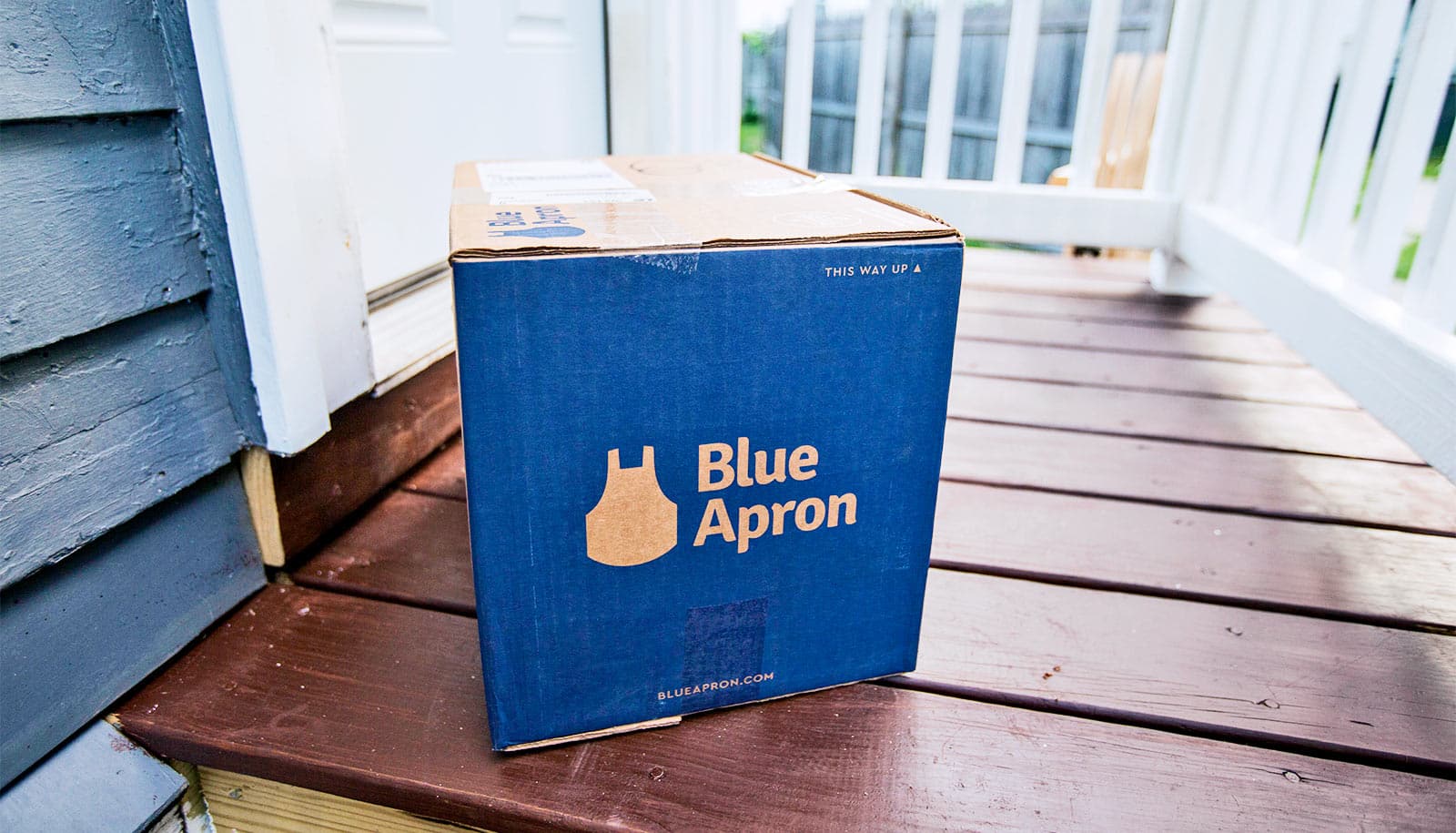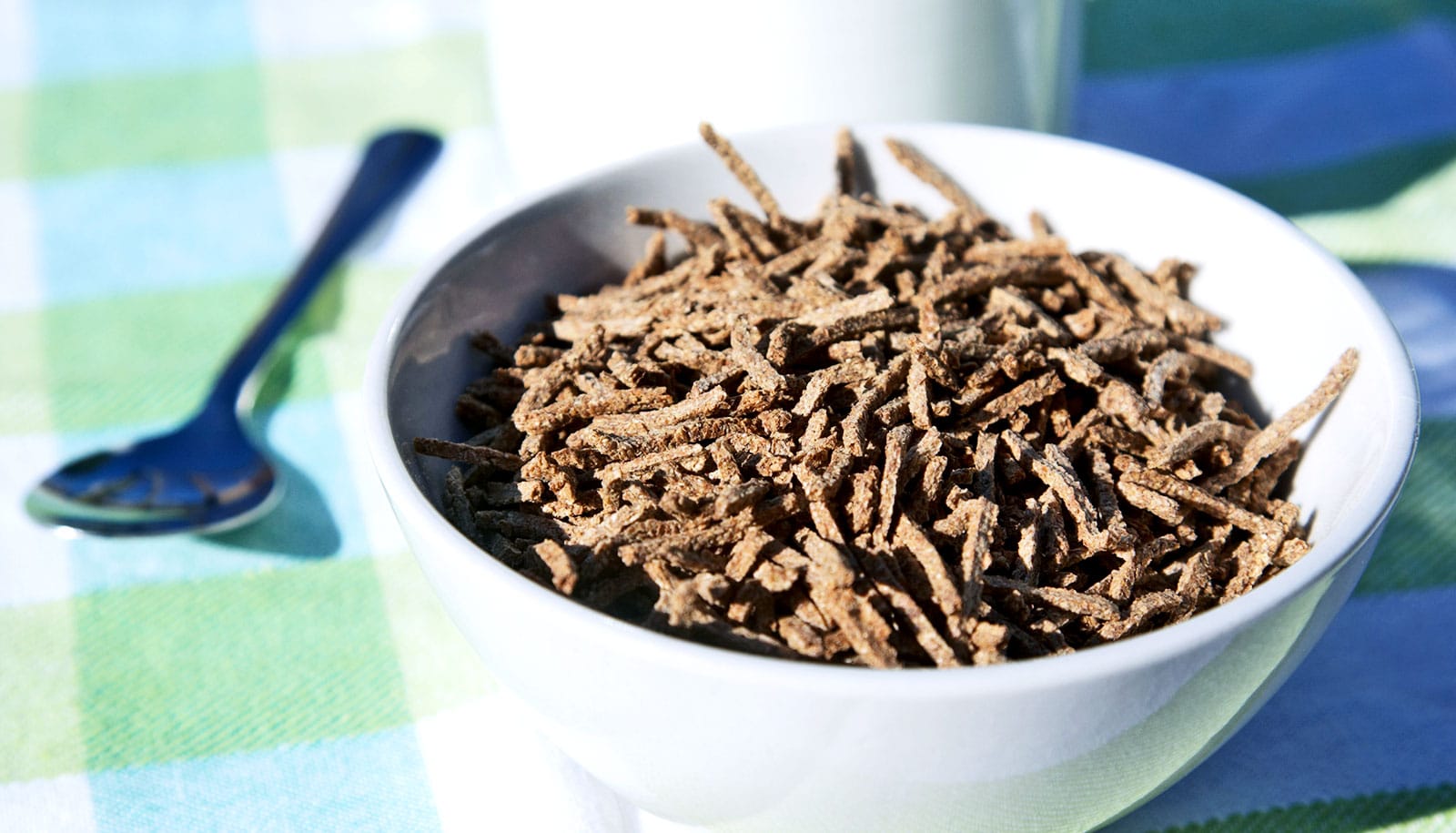Meal kits have a much lower overall carbon footprint than the same meals purchased at a grocery store, despite having more packaging, according to new research.
Meal kit services, which deliver a box of pre-portioned ingredients and a chef-selected recipe to your door, are hugely popular but get a bad environmental rap due to perceived packaging waste.
Average greenhouse gas emissions were one-third lower for meal kit dinners than the store-bought meals when every step in the process—from the farm to the landfill—was considered, the study finds.
The main reason? Pre-portioned ingredients and a streamlined supply chain lower the overall food loss and waste for meal kits compared to store-bought meals.
“Meal kits are designed for minimal food waste,” says senior author Shelie Miller, an associate professor at the School for Environment and Sustainability and director of the Program in the Environment at the University of Michigan.
“So, while the packaging is typically worse for meal kits, it’s not the packaging that matters most,” Miller says. “It’s food waste and transportation logistics that cause the most important differences in the environmental impacts of these two delivery mechanisms.”
Dinner delivery
Since Blue Apron, HelloFresh, and Plated entered the US market in 2012, dozens of other companies have started selling meal kits that shoppers can order online and cook at home. Refrigeration packs in the boxes keep ingredients cold.
Annual US meal kit sales reached an estimated $3.1 billion in 2018 with a growth rate of nearly 22 percent, according to the Packaged Facts research firm.
In a 2018 Nielsen survey, 9 percent of US consumers surveyed said they had purchased a meal kit, while 25 percent of respondents said they would consider trying a meal kit in the next six months.
Despite the popularity of meal kits, their environmental impacts are understudied, according to the researchers. The new study assesses relative greenhouse gas emissions of meal kits compared with grocery store meals.
Emissions breakdown
Researchers sourced and prepared the recipes for five two-person meals—salmon, cheeseburger, chicken, pasta, and salad—from both a meal kit service and a grocery store. They purchased meal kits from Blue Apron.
The researchers estimated greenhouse gas for every major step in the lifetime of the food ingredients and the packaging: agricultural production, packaging production, distribution, supply chain losses, consumption, and waste generation.
This type of cradle-to-grave impacts study is called a comparative life-cycle assessment. The researchers based greenhouse gas estimates, expressed as carbon dioxide equivalent emissions per meal (CO2e/meal), on values found in previously published studies.
The study found that the emissions tied to the average grocery store meal were 2 kilograms CO2e/meal higher than an equivalent meal kit. The researchers calculated the average emissions to be 6.1 kg CO2e/meal for a meal kit and 8.1 kg CO2e/meal for a grocery store meal, a 33 percent difference.
Median grocery meal emissions exceeded the median meal kit emissions for four of the five meal types: salmon, chicken, pasta, and salad.
3 factors
Three main factors influenced emissions differences between meal kits and store-bought meals: food waste, packaging, and the supply-chain structure, which includes transportation logistics.
Emissions tied to household food waste from grocery meals exceeded those for meal kits for all five meals. The difference was attributed to meal kits pre-portioning ingredients, leaving fewer ingredients that are later wasted.
Generally speaking, meal kits contain large amounts of packaging but less food per meal due to pre-portioning. Grocery meals have less packaging per meal, but customers have to buy larger quantities of food, leading to higher household food waste.
“We took a close look at the tradeoff between increased packaging and decreased food waste with meal kits, and our results are likely to be a surprise to many, since meal kits tend to get a bad environmental rap due to their packaging,” says Miller.
“Even though it may seem like that pile of cardboard generated from a Blue Apron or Hello Fresh subscription is incredibly bad for the environment, that extra chicken breast bought from the grocery store that gets freezer-burned and finally gets thrown out is much worse, because of all the energy and materials that had to go into producing that chicken breast in the first place,” Miller says.
The last mile
Meal kits and grocery meals also exhibit radically different supply chain structures that influence their greenhouse gas emissions.
By skipping brick-and-mortar retailing altogether, the direct-to-consumer meal kit model avoids the food losses that commonly occur in grocery stores, resulting in large emissions savings. For example, grocery stores overstock food items due to the difficulty in predicting customer demand, and they remove blemished or unappealing foods that may not appeal to shoppers.
Meal kits also displayed emissions savings in what’s called last-mile transportation—the final leg of the journey that gets food into the consumer’s home.
Meal kits rely on delivery trucks. Since each meal kit is just one of many packages delivered on a truck route, it is associated with a small fraction of the total vehicle emissions. Grocery store meals, in contrast, typically require a personal vehicle trip to the store and back.
In the study, last-mile emissions accounted for 11 percent of the average grocery meal emissions compared to 4 percent for meal kit dinners.
“The way consumers purchase and receive food is undergoing substantial transformation, and meal kits are likely to be part of it in some way,” says first author Brent Heard, who conducted the research for his doctoral dissertation at the School for Environment and Sustainability.
“In order to minimize overall impacts of the food system, there is a need to continue to reduce food loss and waste, while also creating advances in transportation logistics and packaging to reduce last-mile emissions and material use.”
In the study, the largest emissions source, for both meal kits and grocery store meals, was food production: 59 percent of meal kit emissions and 47 percent of grocery meal emissions were tied to agricultural production. Meals with the largest environmental impact either contained red meat or were associated with large amounts of wasted food.
The research will appear in the journal Resources, Conservation and Recycling. While researchers consulted Blue Apron employees for the study, the company provided no funding for the work. The National Science Foundation and the University of Michigan Undergraduate Research Opportunity Program funded the study.
You can read an interview with the researchers here.
Source: University of Michigan


